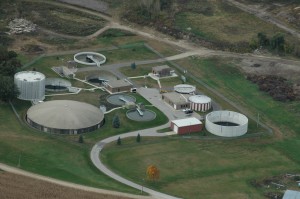I recently read about the idea of businesses having a “social license” to operate, issued by a broad base of stakeholders affected by the business directly and indirectly. But key to the social license is the community that is most local to the company’s impacts.
The article I read was about mining businesses in Australia, but it gives rise to an interesting idea that turns corporate social responsibility on its head. In the CSR model, companies are the actors who decide how much and when they’ll be socially responsible. In the CSR model, social responsibility is, ultimately, optional.
In the social license model, the power is shifted to the group that grants the license. Although the article uses the social license as a metaphor for how a company’s brand is perceived, in reality, the term “social license” acknowledges that citizen groups, governments and advocates increasingly have power over the behavior of companies. These days citizens and other stakeholders can use open data to find out more than ever. Global communication and information flow enables research, and research leads to alternatives that give them more bargaining power in negotiations.
Using creative design activist tactics ranging from hacking to pop-up installations to fictional products, community groups can disrupt the ‘authorized narratives’ from companies that often try to scare us with warnings of economic losses or hiring reductions. By calling on design projects that demonstrate alternatives, community groups gain bargaining power –they can ask for these alternatives to be developed and expanded. If demonstrations projects took place elsewhere, they can bargain to get these kinds of projects in their own communities.
For example, do you want a water treatment plant across the street from your house that looks like the top photo—a “normal” plant—or the bottom photo, a re-imagining of water treatment with ecological and social value? The bottom photo reflects a demonstration project, Steven Holl Architects’ Lake Whitney Water Treatment Plant with landscape architecture by Michael Van Valkenburgh and Associates. 

And by the way, tactics, disruption and bargaining power are just a few of the elements of design activism that I cover in the book Architecture & Design versus Consumerism: How design activism confronts growth (read more about its contents here).
We do have building and product rating systems and product labels (two other tactics I profile in the book), but to my mind these are different than a social license. Ratings and labels come from authorized organizations and aim to inform community and consumer groups, but a social license needs to come from the community stakeholder groups themselves. In that sense stakeholders might draw in ratings or labels as part of an overall social license.
I can envision the social license concept applying to a wide range of business (and other organization) types ranging from supermarkets to hospitals to universities to computer companies—alongside seemingly more intensive industries such as mining.
However, this kind of license has implications for stakeholders as well, and making these “consumer” implications clear alongside the constraints on “producers” would be a good thing. If we want reduced impacts from producers, we as consumers also have to change our behavior.
What do you think of the social license idea? How do you think it compares to the rating and labeling systems? Let us know in the comments. Also, check out my “Thursday Inspiration” post on sustainable design and open data.
really this is a nice content writing article for water cleaning.this article can be helpful to the many of the public people.thanks for sharing.
CSR Corporate Social Responsibility in business terms is defined as Operation of a business in a manner to comply with ethical, legal, and public expectations of society